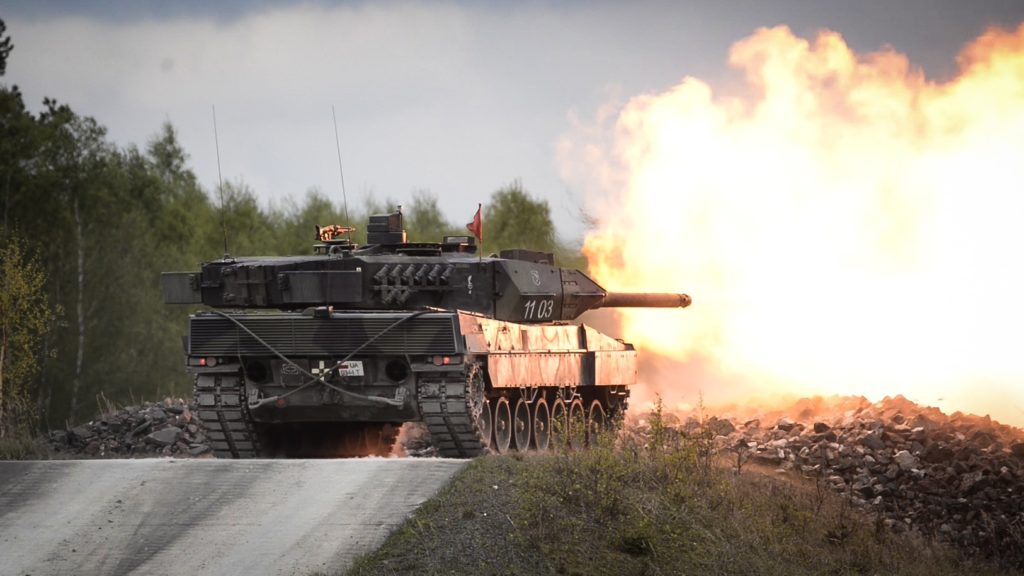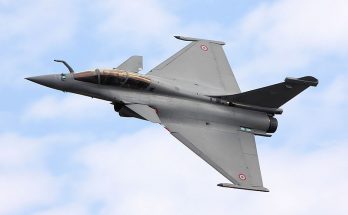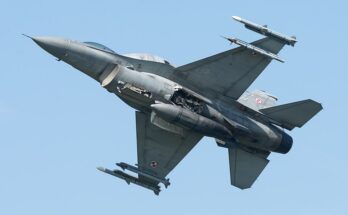
As European capitals grapple with Washington’s changing foreign policy priorities under the Trump administration, the continent is increasingly coming to terms with the state of its military readiness, especially in comparison to the Russian military. Many modern European militaries are far smaller in size than they were during the Cold War and, European leaders fear, may be approaching a future where they are facing Moscow alone. In response, governments across the European Union (E.U.) have boosted funding for their militaries, and the bloc itself is looking for ways to help its members raise their security spending.
Last week, the European Commission released a new strategy paper, dubbed ReArm Europe Plan/Readiness 2030, that outlines the initiatives the European Union is pursuing to help its members lift defense spending and procure needed military hardware. The white paper identifies seven “priority capability areas” for European militaries, drawn from the bloc’s current capability gaps. These priorities are air and missile defense; artillery; ammunition; drones and counter-drone systems; infrastructure supporting military mobility; artificial intelligence and electronic warfare; and “strategic enablers” like strategic airlift and tanker aircraft.
The clock is ticking to address these gaps, as Russia works to restock its forces with replacement equipment for kit destroyed in Ukraine. But despite the urgent rearmament requirement, Europe still broadly underspends on defense.
According to the E.U.’s data, the economic bloc’s combined defense spending in 2024 stood at €326 billion ($353.1 billion), with defense investment reaching almost a third of that figure. Military spending grew 31 percent across the E.U. since 2021 — but the bloc’s collective defense spending still stood at only 1.9 percent of economic output in 2024. Russia’s defense budget, by contrast, is over 6 percent of GDP, and spent the decade leading up to the invasion of Ukraine averaging between 3-4 percent of GDP annually.
Moreover, while Europe collectively possesses a strong defense industrial base, the continent’s Armed Forces still have a tendency to order from external sources, either because European industry can’t produce an equivalent or its productive capacity is too small to deliver the equipment expeditiously. In September, former European Central Bank chairman Mario Draghi released a wide-ranging report on E.U. competitiveness highlighting that, in the year period from June 2022 to June 2023, over two-thirds of E.U. military procurement came from the United States, with another 15 percent going to other non-E.U. sources.
Under the ReArm Europe plan, the E.U. will help its members grow their defense spending and thereby boost Europe’s defense industry in the process. The plan involves several segments, which principally focus on expanding members’ fiscal capacity and encouraging investment in the defense sector.
Growing Fiscal Capacity
Perhaps the most consequential aspect of the policy changes is the relaxation of the E.U.’s debt and deficit rules to enable members to grow their defense spending, a step that Poland and several other countries have called for.
As part of the membership in the E.U., countries are expected to run a reasonably tight fiscal ship, keeping deficits to no more than 3 percent of GDP and debt to under 60 percent of economic output. The difficulty of following these rules amid crises, however, led to the creation of an escape clause that can be triggered in circumstances such as the COVID-19 pandemic that saw government revenues crater amid business closures and travel restrictions. With the escape clause, governments could deviate from the fiscal rules to ensure they could provide adequate support to their economies throughout the pandemic.
The pandemic-related escape clause lasted through 2023 and was deactivated in 2024 as part of an effort to encourage E.U. members to rein in their budget deficits. But at present, close to half of the bloc, including some of its bigger members like France, are running fiscal imbalances above the 3 percent target, and average indebtedness in the E.U. is over 80 percent of GDP, underscoring the lack of wiggle room for many countries to raise defense spending meaningfully higher without tightening the belt on other budgetary priorities.
Given the fiscal pressure on its members, the E.U. will reactivate the escape clause, this time with a defense focus in mind. In its white paper, the Commission proposed easing the budget rules for a renewable period of four years to allow for E.U. members to add up to 1.5 percent of GDP to defense spending annually without running afoul of the deficit restrictions. The European Commission’s white paper projects that, with the rule suspension, E.U. members could have the space to expand their defense budgets by up to €650 billion in total.
But not every country will take advantage of the additional fiscal space, as they still ultimately have to foot the bill. Some of Europe’s biggest defense spending laggards have already ruled out utilizing it. So while this change could result in an additional €650 billion in European defense spending through 2030, it won’t fully reach that level in practice.
SAFE Financing Instrument
The other major portion of the plan calls for the creation of a financing instrument called Security and Action for Europe (SAFE) that would raise funds in capital markets to help countries pursue joint procurement, performing similarly in function to an E.U. initiative launched during the pandemic called NextGenerationEU. The loans are backed by the E.U.’s budget, but repaid by the member state that borrowed the funds.
As much as €150 billion could be mobilized through the SAFE instrument, the Commission notes in its paper, and the funds are automatically eligible under the escape clause.
In terms of participants, SAFE funding will only be provided if E.U. content amounts to at least 65 percent of the equipment, but the door is left open for non-E.U. countries to join, as well. The paper notes, “Other partner countries’ entities and products can be eligible for common procurements subject to an agreement with the Union on financial conditions and security of supply.” This includes the countries in the European Economic Area, the countries in the European Free Trade Association, and, significantly, Ukraine.
SAFE may be an appealing instrument for some countries in the context of rising government bond yields, as it benefits from the E.U.’s AAA credit rating – enabling some members to access financing at lower rates than those that might be available on their national debt markets. As it is paid back by the borrowing country, however, SAFE does not amount to debt mutualization, which has long been considered a bridge too far for many of the E.U.’s more fiscally-hawkish members.
European Investment Bank
Another pillar of the plan aims to unlock more investment in the defense sector by widening the scope of defense- and security-related programs that the E.U. member-owned European Investment Bank (EIB) can lend to. The EIB under its rules is barred from lending to ‘pure-play’ military programs like ammunition, and projects that it does lend to must have significant civilian application. Up to €1 billion was available for security-related loans in 2024 – but the facility has been underutilized, likely in part from the restrictions on eligibility.
In January, 19 E.U. countries penned a letter to the EIB requesting it reform both the eligibility requirements as well as the volume of funding available. Under the new ReArm Europe plan, some steps will be taken to address those complaints, raising the available volume of funds in 2025 to €2 billion, to be available to finance “drones, space, cybersecurity, quantum technologies, military facilities, and civil protection.”
Mobilize Private Capital
Besides the direct projects that the EIB will be involved with, the intent with expanding its defense exposure is to help jump-start investment into defense from the private sector. The Commission states in its paper that public investment alone will not be enough to support a true overhaul of the European defense sector, so the E.U. should encourage banks to embrace the defense sector, rather than shy away from it.
On this end, the Commission’s goal will bump up against ingrained challenges to defense finance on the continent, particularly in that the investment is viewed as ‘unethical’ and out of step with environmental, social, and governance (ESG) goals. Many banks and asset managers in Europe avoid defense entirely: access to finance is a concern for close to half of defense-focused small and medium enterprises in the E.U., the Commission highlights in its paper, and investment is moreover dominated by U.S. financiers, who make up 60 percent of the investment for these companies.
In its white paper, the Commission reiterates that E.U. Sustainable Finance Disclosures Regulation, which requires sustainability disclosures from market participants, “does not prevent the financing of the defense sector.” Added clarity may encourage European financial firms to dip their toes more heavily into defense, but alone it may not be enough to dramatically change banks’ concerns on ESG-related reputational risks with financing the defense sector.
Military markets analyst, covering Eurasia, Middle East, and Africa.




